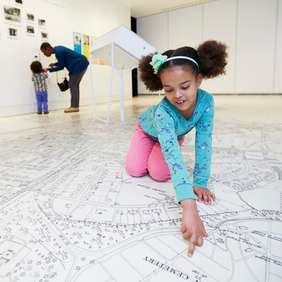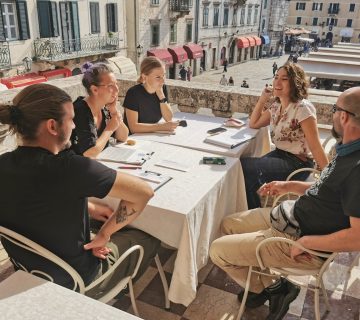We were inspired to write this article after reading the post from Claire Madge, Autism in Museums: a revolution in the making. The author mainly writes about adaptations museums are making to welcome visitors with ASD. But then we asked, what can heritage interpretation offer to this very particular group of visitors?
ASD is a neurological disorder that manifests itself in many different forms and issues. It is why it’s called the ‘autistic spectrum’. Some experts go as far as placing all of us somewhere on the spectrum.
Think about it. Do you have difficulties with social contacts and communication, reading social situations and other people’s feelings? Do you get stressed out by loud unexpected noises or bright lights? Maybe you have a very particular interest (numbers, trains, licence plates, etc.) that others might find a bit strange? We cannot generalise but these are some of the most common signs of ASD and as Claire Madge describes, these are also obstacles that visitors with ASD face when visiting museums and heritage sites:
‘ Autism is a spectrum condition and the barriers that visitors face to accessing museums can vary and be difficult to predict. Crowded busy environments can be a challenge, as can overly bright or dark galleries, loud interactives, or audio that is triggered without warning. Wayfinding in museums can be a daunting prospect for autistic visitors, and the unwritten museum rules about what you can and can’t touch can be difficult to interpret for visitors who have a very literal interpretation of language.’
So how can heritage interpretation offer meaningful experiences of heritage to visitors who think and communicate differently than neurotypical individuals?
We communicate heritage to our visitors but one of the main issues for people with ASD is communication. It can range from non-existent, very poor to very proficient, but all people with ASD interpret language very literally. Typically, people can’t read between the lines, they miss subtleties or fail to grasp a wider context of the conversation. Facts matter and must be presented in a straightforward way. This could be one of the reasons why people with ASD prefer fact-based, ‘black-and-white’ occupations free from the complexities of communication and people.
So where does this leave heritage interpretation? We see in this group one of the biggest challenges and opportunities to re-evaluate our profession. Where are the limits of our reach and just how ‘comfortable’ are we with our visitors creating their own interpretation? Should we simply be content that the interpretive tools we have created are enjoyable and relaxing, something very difficult to achieve outside home?
Our conclusion is that we plan interpretation calculating as many factors as possible, making heritage as accessible as possible. Ultimately, though, visitors have the final say on how they are going to use, enjoy or perceive our efforts. We can’t nail things down and we would be wrong to. However, by providing a safe, comforting environment (even engaging with designers who have specific experience of designing ‘autism-friendly’ spaces) and providing broad sensory stimulation less reliant on finely-crafted texts and thought-provoking guided tours, we can provide people with ASD the space they need to engage with phenomena and express themselves there and then or later, at home. In many ways, it’s the strength of the phenomenon that counts where it can almost speak for itself with a little help from us interpreters to enable people with ASD to engage in their own way and take from the experience what matters to them.
So remember, next time you visit a museum or gallery or wander around your own place of work, if you see a child lying on the ground watching dust speckles dance in a shaft of sunlight or running around screaming out the numbers written on the panels or other signs, they are just exploring another perspective; a different look upon our world. If they are having fun and finding a way to indulge in their passion, maybe we as interpreters have done a good job. It is It’s worth a try, isn’t it?
Janja Sivec is a freeance interpretive consultant, IE trainer and proud ASD mum. You can reach her at: janja.sivec@dlegende.com.
Sandy Colvine is a member of IE’s Supervisory Committee and an IE trainer. He lives near Montelimar, France, and can be contacted at: alexander.colvine@interpret-europe.net.
To cite this article:
Sivec, Janja and Colvine, Sandy (2020) ‘Revolution in the making – Interpreting heritage for visitors with ASD ‘. In Interpret Europe Newsletter 1-2020, 4-5.
Available online:
www.interpret-europe.net/fileadmin/Documents/publications/Newsletters/ie-newsletter_2020-1_spring.pdf




